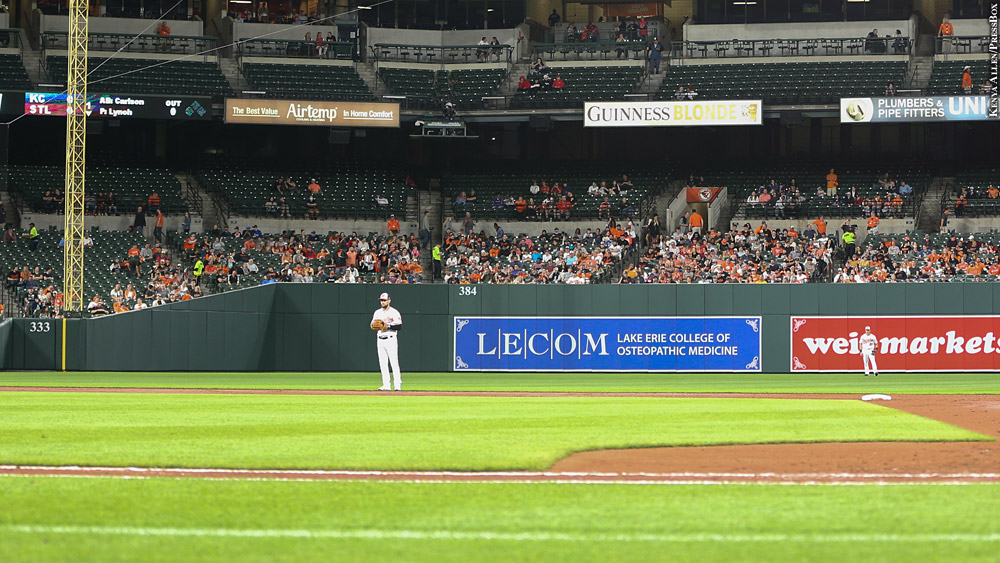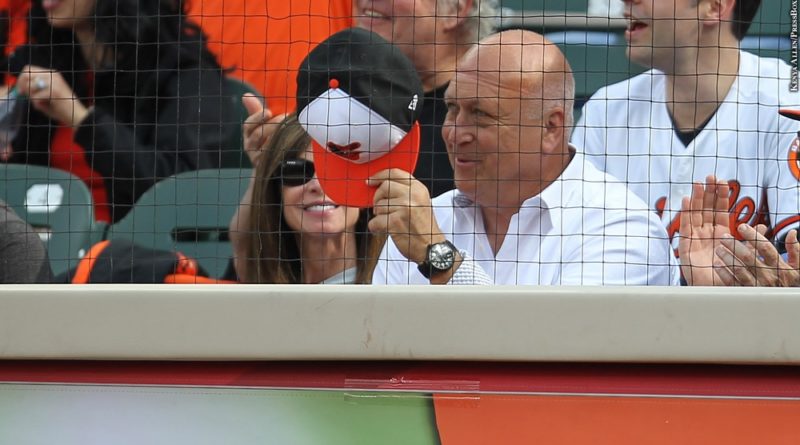The new left field dimensions at Camden Yards mark a stark difference from years past, and Orioles legend Cal Ripken Jr., who played at the ballpark from 1992-2001, hopes the park plays fair for hitters and pitchers in the years to come.
From the time the park opened (1992) to the most recent full season (2021), Camden Yards surrendered 5,911 home runs, most among the nine parks open during that period. The original left field dimensions, particularly the 364-foot power alley, were often blamed for all the homers, along with Orioles pitching staffs that were usually less than stellar.
About 1,000 seats in left field were removed as part of a major renovation this offseason. The left-field corner remains 333 feet, but the fence quickly extends out to 384 feet, and left-center field is now 398 feet. Orioles manager Brandon Hyde believes the changes will help his pitching staff.

Ripken hopes the park doesn’t swing too far in favor of pitchers.
“Think of Detroit’s ballpark when it first came in. They ended up moving the fences in [at Comerica Park],” Ripken said on Glenn Clark Radio April 26. “Yankee Stadium had the big, cavernous left-center field and they moved that back in to a more reachable level. I hope it doesn’t play like the Grand Canyon. I hope it’s fair for all hitters and pitchers.”
Not only are the dimensions deeper but the fence is higher as well. The fence is now as high as 13.5 feet, up from 7 feet in years past. A short wall in left field made for entertaining home run robberies in the first three decades of the park, like when Rickey Henderson took a home run away from Ripken in 1993.
Ripken likes home run robberies, but he believes the new setup could create some excitement, too.
“If you look at a place like Fenway Park, they have the big Green Monster. I think that gives a different entertainment value,” Ripken said. “The ball hits off of that, it could carom in many different directions. … Maybe this wall in left field will provide a uniqueness that turns out to be really good.”
Ripken hit 85 of his 431 career home runs at Camden Yards, including a handful of particularly memorable ones, like passing Ernie Banks, 2,130, 2,131 and career home run No. 400. He hit his 278th career home run as a shortstop came on July 15, 1993, passing Banks on that particular list. The Orioles marked the landing spot of the home run with an orange seat.
Orioles GM Mike Elias called Ripken this offseason to tell him the seat was being moved.
“Mike Elias called me up and said he just wants to give me a heads up that the seat that the home run landed in that broke the shortstop home run record was going to be moved to another part of the stadium,” Ripken said. “I kind of laughed to myself. I’m going, ‘That really doesn’t matter to me.’ I appreciate indicating that’s where it happened. That moment lives a little bit longer as a result of that.”
Ripken believes Camden Yards got a bit of a bad rap as a bandbox, explaining that his teams tended to be built for home runs — think about the ’96 and ’97 teams with Brady Anderson, Robbie Alomar, Chris Hoiles and Rafael Palmeiro — and that the massive warehouse made the park feel smaller than it really was.
And there’s at least one way Camden Yards was definitely more pitcher-friendly than its predecessor, according to Ripken.
“I always thought Memorial Stadium was favorable [to hitters] down the lines, of course. It was only 309 down the lines,” Ripken said. “You could hit a line drive down the [left field] line that was hooking foul, but because it was only 309 it would stay fair. If you go to Camden Yards, it [is] 333. You hook a ball down the line and you think it has a chance, but has more distance to pull foul.”
For more from Ripken, listen to the full interview here:
Photo Credits: Kenya Allen/PressBox

